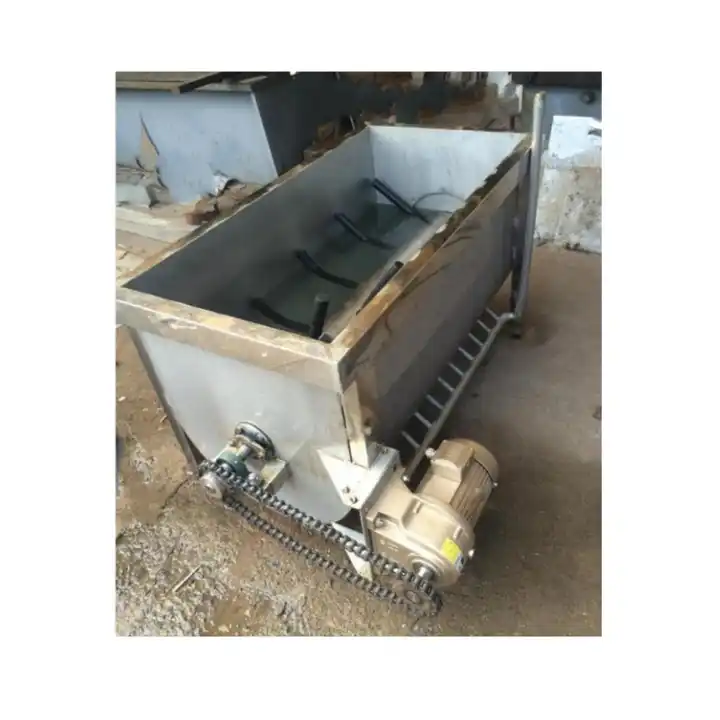fish feed extruder machine
Nov . 18, 2024 23:19 Back to list
fish feed extruder machine
The Importance of Fish Feed Extruder Machines in Aquaculture
In the rapidly evolving world of aquaculture, the demand for efficient, high-quality fish feed has never been greater. As fish farming expands to meet global protein demands, the use of advanced technology, particularly fish feed extruder machines, has become essential for producing fish feed that maximizes growth rates and minimizes waste. This article delves into the importance of these machines, their working principles, and the benefits they bring to fish farming enterprises.
Understanding Fish Feed Extruder Machines
Fish feed extruder machines are specialized equipment designed to process raw materials into high-quality extruded feeds tailored for various fish species. The process involves mixing ingredients, cooking them through controlled temperature and pressure, and then extruding the mixture into pellets or floating granules. The result is a uniform feed that can be easily digested by fish, ensuring optimal nutrient absorption.
The core components of an extruder include a feeder, a barrel, a screw, and a die. The raw materials, usually composed of fish meal, cereals, and vitamins, are fed into the machine. As they move through the barrel, they are subjected to heat and shear forces created by the rotating screw. This not only cooks the ingredients but also binds them together. The mixture is then forced through a die that shapes the feed into pellets of predetermined sizes, which can be adjusted based on the specific requirements of the fish species being cultivated.
Advantages of Using Fish Feed Extruder Machines
1. Improved Feed Quality The extrusion process enhances the digestibility of the feed, increasing the availability of nutrients. This results in better growth performance and feed conversion rates for the fish. Extruded feeds also have a lower spoilage rate compared to non-extruded feeds.
fish feed extruder machine

2. Customized Feed Formulations With extruder machines, aquaculture producers can develop customized feed formulations based on the nutritional needs of different fish species. This flexibility allows farmers to optimize their feed for growth, reproduction, and overall health of the fish.
3. Waste Reduction The precision of the extruder allows for better ingredient utilization, reducing feed waste and overall costs. Moreover, due to the enhanced digestibility of extruded feeds, fish produce less waste, which is crucial for maintaining water quality in aquaculture systems.
4. Floating and Sinking Options Fish feed extruder machines can produce both floating and sinking feeds. Floating feeds are particularly beneficial for aquaculture operations, as they allow farmers to monitor feeding behavior and adjust feeding amounts more effectively, preventing overfeeding.
5. Enhanced Shelf Life The extrusion process helps in extending the shelf life of the fish feed by minimizing microbial contamination. The high temperatures involved in extrusion also eliminate potential pathogens that could compromise fish health.
6. Efficiency and Scalability Modern fish feed extruder machines are designed for high efficiency, allowing producers to scale their operations according to market demands. This scalability is essential as the global demand for aquaculture products continues to rise.
Conclusion
The fish feed extruder machine is a vital tool in the modern aquaculture industry. By producing high-quality, nutritionally balanced feeds, these machines support the growth of healthy fish populations while optimizing resource use. As aquaculture continues to expand globally, the role of fish feed extruders will become increasingly significant in ensuring sustainable practices and meeting the world's protein needs. Investing in this technology not only enhances the efficiency of fish farming operations but also contributes to the overall health and sustainability of aquatic ecosystems. For aquaculture businesses looking to remain competitive, adopting advanced feeding technologies like those offered by fish feed extruder machines is not just an option; it is a necessity.
-
Hot Sale 24 & 18 Door Rabbit Cages - Premium Breeding Solutions
NewsJul.25,2025
-
Automatic Feeding Line System Pan Feeder Nipple Drinker - Anping County Yize Metal Products Co., Ltd.
NewsJul.21,2025
-
Automatic Feeding Line System Pan Feeder Nipple Drinker - Anping County Yize Metal Products Co., Ltd.
NewsJul.21,2025
-
Automatic Feeding Line System - Anping Yize | Precision & Nipple
NewsJul.21,2025
-
Automatic Feeding Line System - Anping Yize | Precision & Nipple
NewsJul.21,2025
-
Automatic Feeding Line System-Anping County Yize Metal Products Co., Ltd.|Efficient Feed Distribution&Customized Animal Farming Solutions
NewsJul.21,2025






